==================
Florida Splendors is supported by our audience. When you purchase through one of our links, we may earn a small affiliate commission. As an Amazon Associate I earn from qualifying purchases. Your cost is not affected.
The importance of the Florida Everglades cannot be overstated, as it plays an indispensable role in maintaining ecological balance. Nestled in the heart of South Florida lies a natural wonder that is often overlooked but crucial to our planet’s health and vitality: the Florida Everglades. This vast, unique ecosystem is more than just a sprawling marshland; it is a lifeline for countless species of plants and animals, a vital water source for millions of residents, and a powerful buffer against climate change. From its rich biodiversity to its intricate waterways, the Everglades supports life in myriad ways, making its preservation essential for future generations. Join us as we delve into the importance of the Florida Everglades and uncover why protecting this incredible ecosystem is imperative.
Unveiling the Importance of the Florida Everglades: A Vital Ecosystem
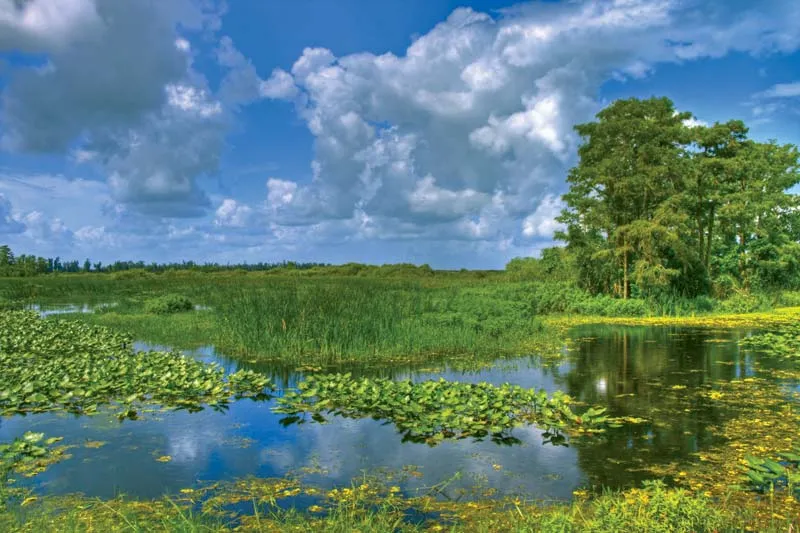
Believe it or not, the seemingly endless Everglades is just a shadow of its former self. Once covering nearly a third of Florida, this vital ecosystem has shrunk by a staggering half in just the last 200 years, highlighting the critical need for its preservation. Understanding the importance of the Florida Everglades and why it’s such a vital ecosystem is essential if we are to preserve it!
The Florida Everglades is a remarkable natural treasure that plays a crucial role in the ecosystem of southern Florida. Stretching over 1.5 million acres, this vast wetland is often called the “River of Grass” due to its slow-moving waters and extensive sawgrass marshes.
The Everglades is vital for maintaining biodiversity, providing drinking water, and protecting communities from natural disasters. This unique landscape is home to many plant and animal species, including many endangered species. It supports habitats like hardwood hammocks, coastal lowlands, and marine waters, which offer shelter to species such as the American crocodile and the West Indian manatee.
Key Takeaways
- The Florida Everglades began forming around 5,000 years ago, evolving from the expansive wetlands stretching from the Kissimmee River to Florida Bay into the diverse and intricate ecosystem we see today.
- The importance of the Florida Everglades is evident through its role as a critical hotspot for biodiversity. The Everglades support a wide range of life and natural processes, from hosting endemic species to providing essential ecosystem services like water purification and aquifer recharge.
- The Florida Everglades are vital to Florida’s economy, supporting sectors like tourism, recreation, agriculture, and fishing. Additionally, they play a key role in climate regulation by sequestering carbon and mitigating greenhouse gas emissions.
- Several significant challenges threaten the Florida Everglades, including invasive species, pollution, and urbanization. These issues disrupt the delicate balance of this unique ecosystem and jeopardize its future.
- Ongoing efforts are to restore the Florida Everglades and ensure its long-term survival. Raising public awareness and providing education about the importance of the Florida Everglades is crucial for the successful conservation and protection of this vital natural resource.
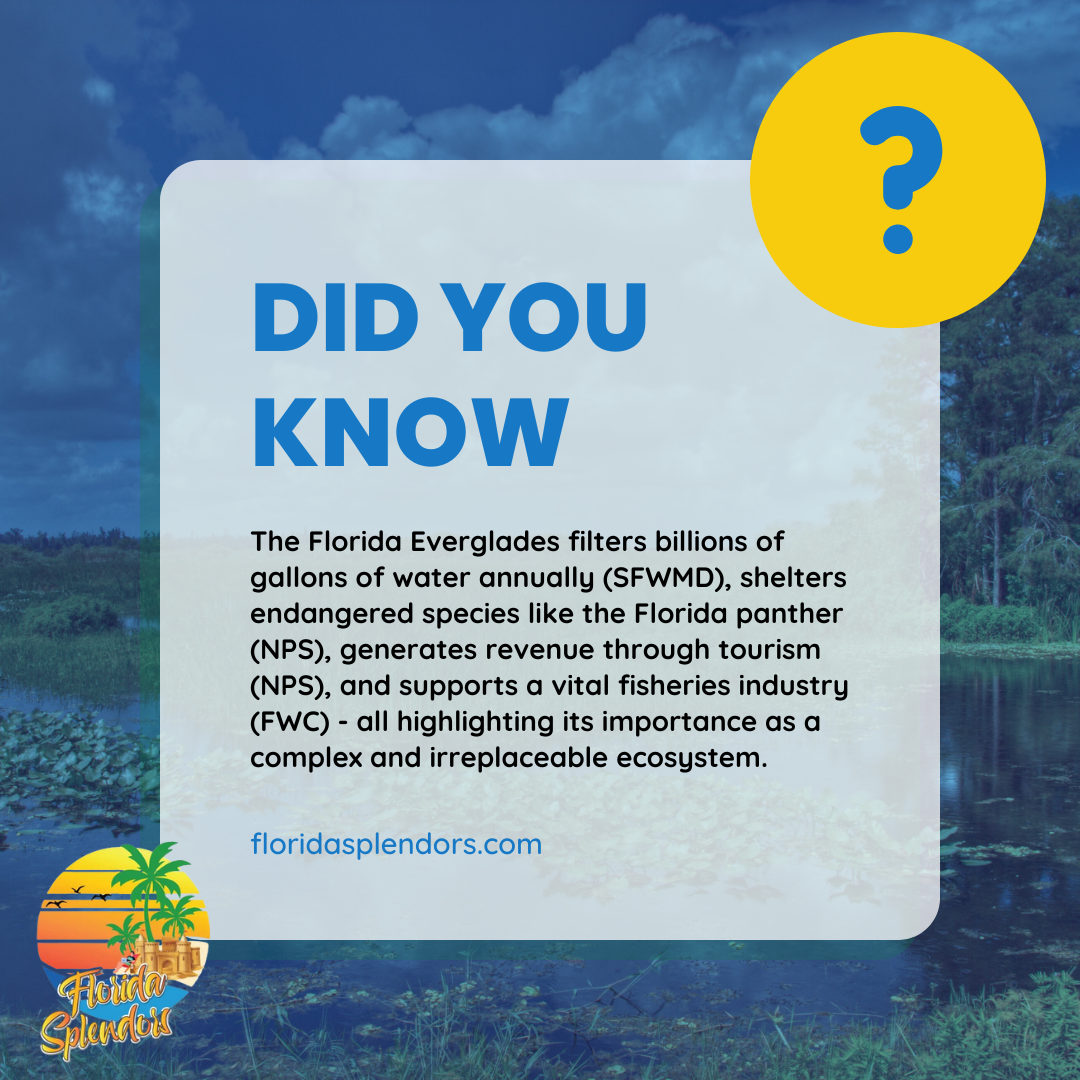
Historical Significance of the Florida Everglades
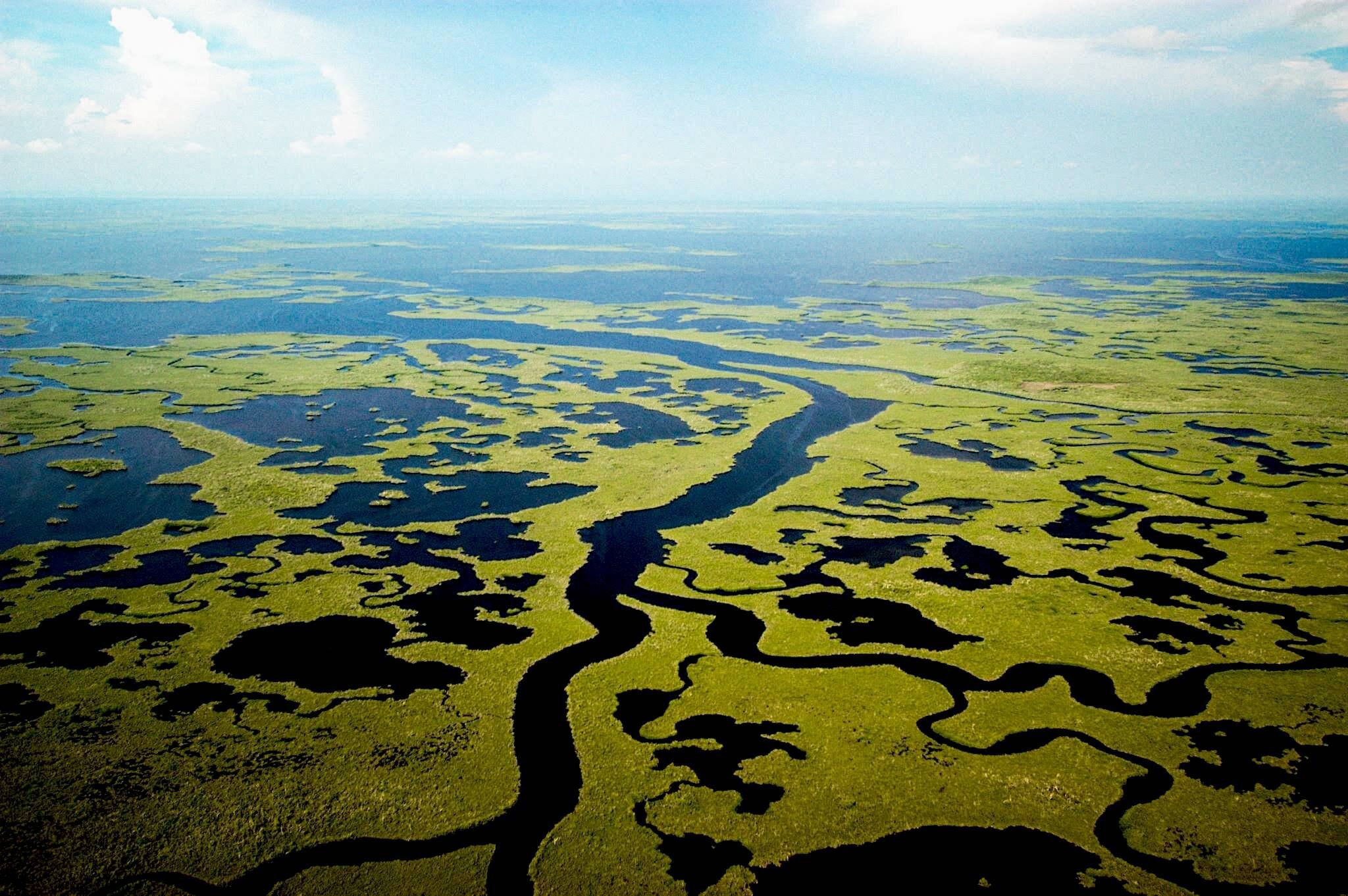
The Florida Everglades has a rich history shaped by natural processes and human interventions. From its ancient formations to modern conservation efforts, the Everglades holds a unique place in the history of the United States.
Formation and Early Human Impact
The Florida Everglades formed about 5,000 years ago. Its ecosystem developed from the vast wetlands beginning at the Kissimmee River and ending at Florida Bay. Early human impact on the Everglades includes the activities of the Calusa people, who were among the first inhabitants. They thrived in this rich environment but disappeared in the late 1700s due to diseases and warfare with European settlers.
Did You Know?
The Seminole and Miccosukee tribes later occupied the region, forced southward by the Seminole Wars. These tribes adapted to the swampy conditions, creating sustainable ways to live off the land. These early interactions highlight the Everglades’ role as a home and resource for various cultures over centuries.
Conservation Efforts and Legislation
Conservation of the Everglades gained momentum in the early 20th century due to its ecological importance. The Everglades became a national park in 1947, marking a significant step in its protection. This was achieved with the support of early conservationists and scientists who recognized the need to preserve its unique ecosystem.
Important legislation includes the designation of the Everglades as a Wetland of International Importance in 1987. This recognition highlights the global value of the Everglades and the need for continued efforts to conserve its diverse habitats. Conservation strategies have aimed to restore natural water flows and protect endangered species that call the Everglades home.
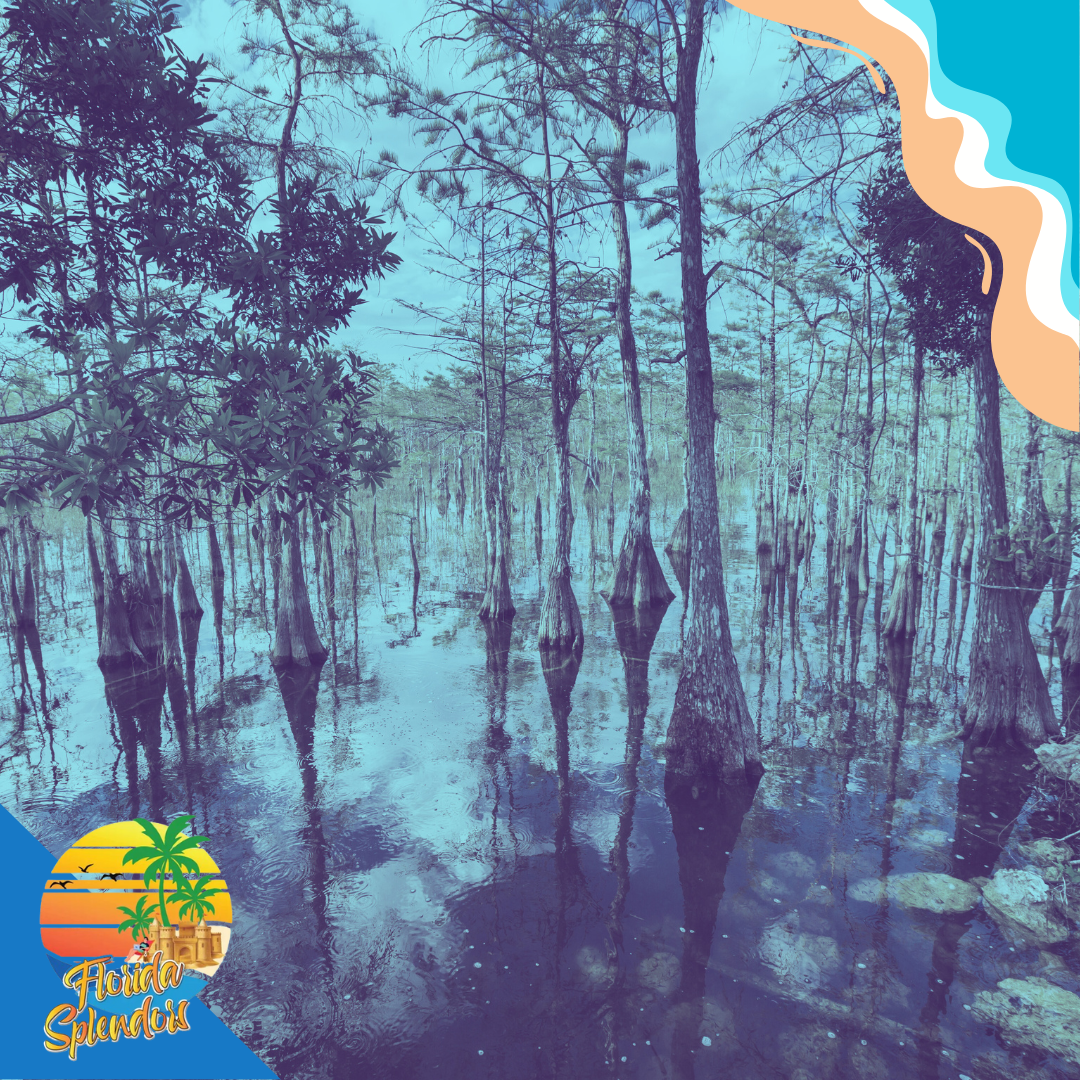
Ecological Importance of the Florida Everglades
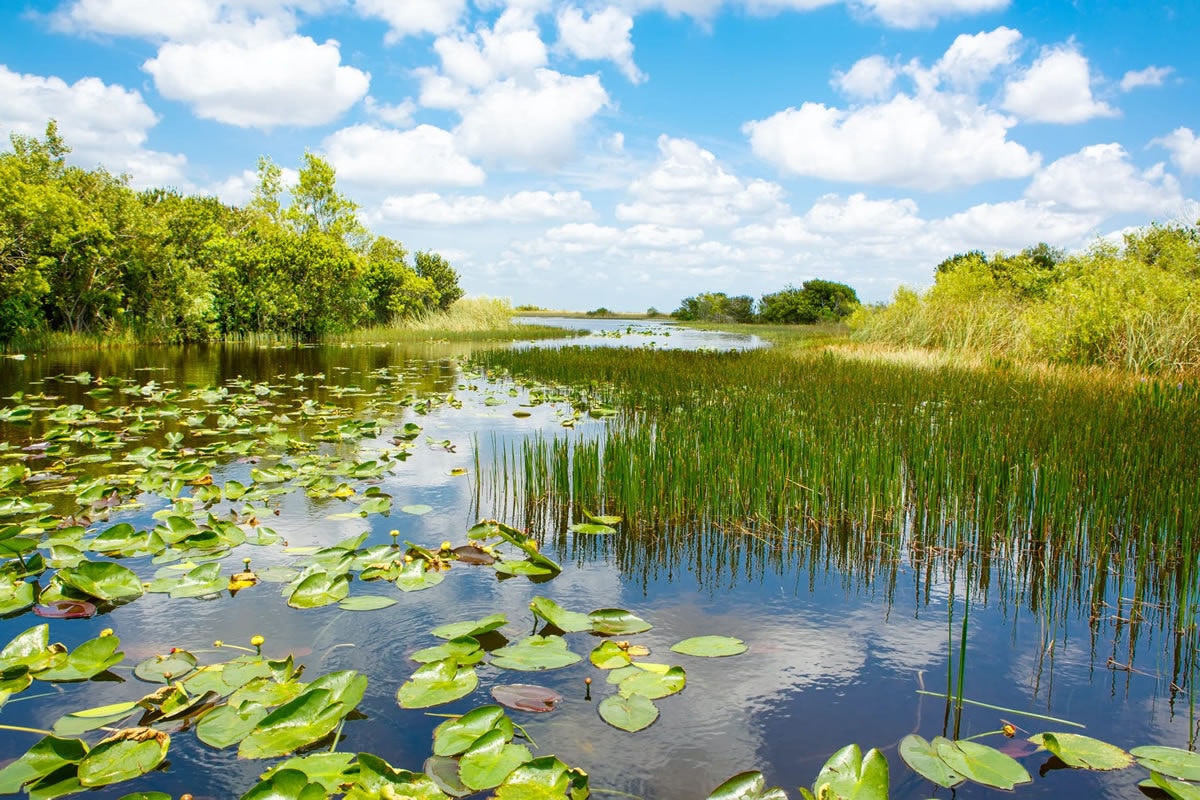
The Importance of the Florida Everglades is highlighted by its role as a crucial hotspot for biodiversity, providing valuable ecosystem services. This vital ecosystem significantly impacts water purification and the health of aquifer systems.
Biodiversity and Endemic Species
The Everglades supports an impressive variety of species. It is home to over 360 bird species, including unique wading birds such as egrets, herons, and wood storks. These species rely on the diverse habitats within the Everglades for nesting and feeding.
Moreover, the Everglades is renowned for its incredible animal biodiversity. It hosts many endemic species, meaning species not found anywhere else. This includes specific types of fish, crustaceans, and mollusks, vital for maintaining the ecological balance.
Wetlands Ecosystem Services
Wetlands in the Everglades offer essential services that benefit humans and wildlife. They provide drinking water for more than 8 million Floridians. Wetlands act as natural buffers, protecting communities from hurricanes and floods by absorbing excess water and reducing impacts.
Additionally, these ecosystems support Florida’s $1.2 billion fishing industry by providing critical habitats for fish breeding and growth. This economic impact illustrates the interplay between a healthy environment and local industries.
Water Purification and Aquifer Interaction
Everglade’s wetlands play a significant role in water purification. As water flows through the wetlands, it undergoes natural filtration, removing pollutants and sediments. This process improves the water quality before it reaches aquifers.
Additionally, the interaction between the Everglades and underground aquifers is vital. Aquifers are underground layers of water-bearing rock that supply fresh water. The wetlands help recharge these aquifers, ensuring a continuous supply of clean water for human consumption and agriculture.
Florida Everglades: Economic Impact
The Florida Everglades contribute significantly to the state’s economy through various sectors. It plays a major role in tourism, recreational activities, and the agriculture and fishing industries.
Tourism and Recreation
Tourism in Florida heavily relies on the Everglades. Visitors from all over the world come to experience its unique wildlife and beautiful landscapes. Activities like bird watching, airboat rides, and hiking bring millions of dollars to the state.
According to the U.S. Bureau of Economic Analysis, the 16 counties in the Everglades ecosystem added $683 billion to Florida’s economy in 2021. Outdoor recreation not only attracts tourists but also supports thousands of local jobs.
This sector includes businesses like hotels, restaurants, and tour operators. The health of the Everglades directly affects the income generated by these activities. Clean water is essential for many recreational activities, making the Everglades’ restoration a key economic priority.
Here’s a video on things you can do in the Florida Everglades!
By: Eagleye Traveler
Agriculture and Fishing Industries
The rich biodiversity of the Everglades also supports Florida’s agriculture and fishing industries, highlighting the importance of the Florida Everglades. These industries depend on the region’s clean water to thrive. The Everglades Reservoir project, for instance, aims to reduce polluted discharges and improve water quality, emphasizing the importance of the Florida Everglades. Cleaner water reduces the impact of toxic blue-green algae, which can damage crops and aquatic life, further showcasing the importance of the Florida Everglades.
Agriculture in the Everglades area includes crops like sugarcane and winter vegetables. Fishing, both commercial and recreational, benefits from the healthy ecosystems maintained by the Everglades. Products from these industries contribute significantly to the state’s economy and provide food and resources to locals and markets nationwide. Ensuring the sustainability of these natural resources is crucial for long-term economic stability.

Climate Regulation and Carbon Sequestration
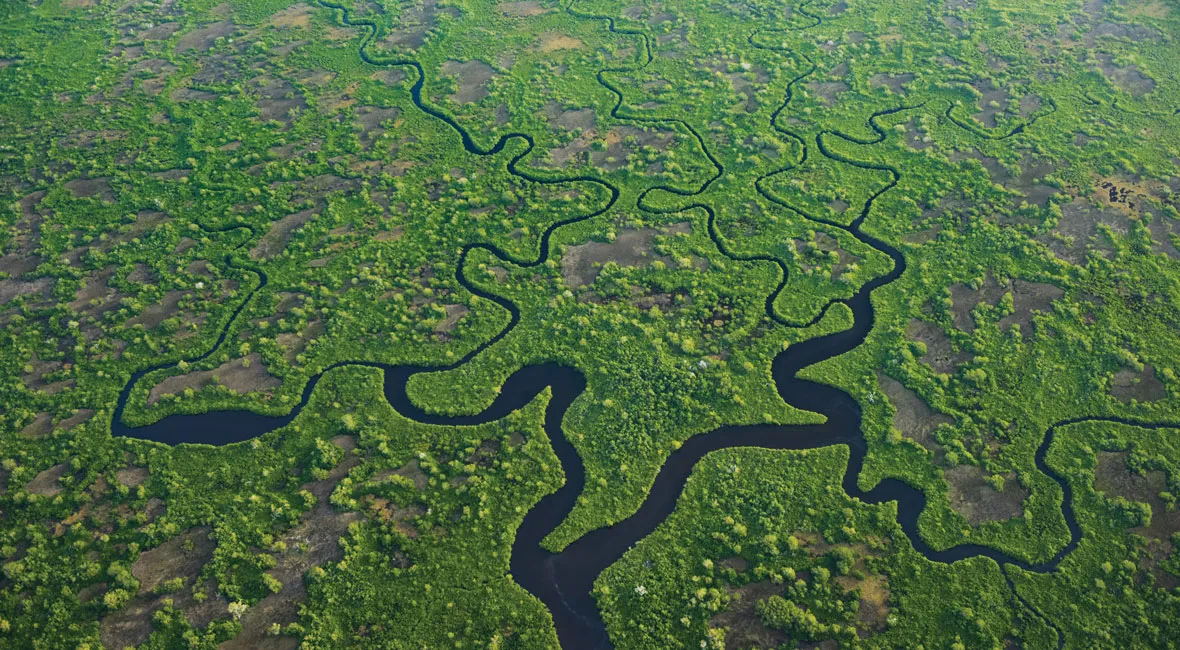
The Florida Everglades are crucial in moderating climate by storing carbon and reducing greenhouse gases. Their ecosystems, particularly mangrove forests, are vital in this regulation process.
Global Warming Mitigation
Mangrove forests in the Everglades absorb significant amounts of carbon dioxide. This carbon stays trapped in the trees’ biomass and soil. Estimates suggest that the carbon stored here is valued between $2 billion and $3.4 billion due to its impact on global warming reduction.
Additionally, the region’s soil and vegetation help store carbon. These wetlands mitigate greenhouse gases like CO2, CH4, and N2O, which are influenced by nutrient levels and water conditions.
Understanding these dynamics highlights how preserving the Everglades contributes to global climate control. Protecting these areas is essential for maintaining their role in carbon sequestration.
Importance of the Florida Everglades: Threats to the Everglades
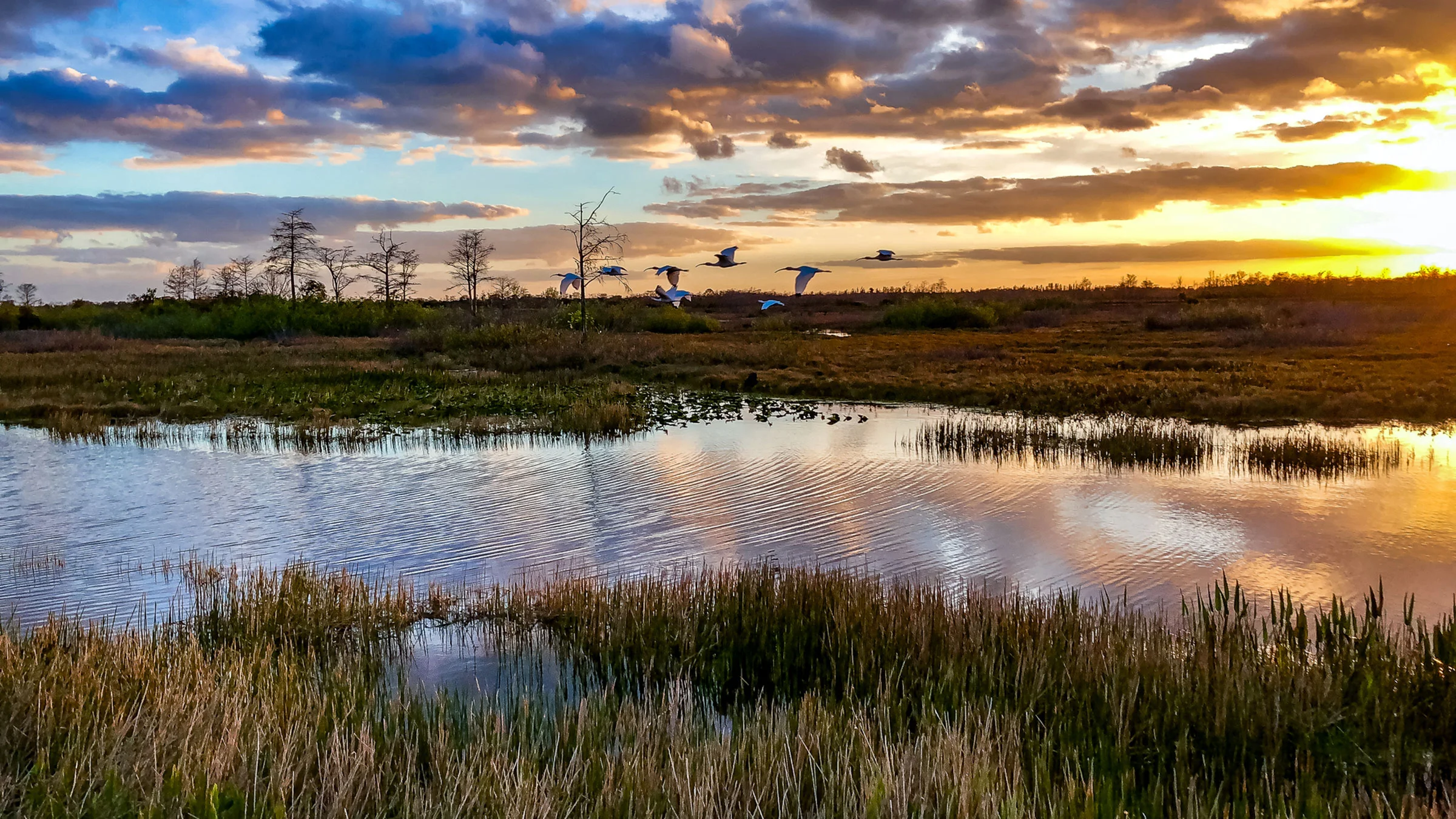
The Florida Everglades faces numerous threats that endanger its unique ecosystem. Key issues include invasive species, pollution, and urbanization, which all contribute to altering the balance of this vital natural area.
Invasive Species
Invasive species pose a significant threat to the Everglades by outcompeting native species for resources. For example, the Burmese python, introduced through the pet trade, has drastically reduced populations of native mammals like rabbits and raccoons.
These pythons have no natural predators in the Everglades, allowing their populations to grow unchecked. Another invasive species, the Brazilian pepper tree, spreads rapidly and displaces native plants. Its dense growth hampers the regeneration of indigenous flora and alters habitats essential for wildlife. Controlling invasive species is crucial to maintaining the Everglades’ biodiversity and ecological balance.
Pollution and Water Quality Issues
Pollution and water quality issues significantly impact the health of the Everglades. Nutrient pollution from agricultural runoff introduces excess nitrogen and phosphorus into the water. This leads to algal blooms that deplete oxygen levels, harming fish and other aquatic life.
Additionally, heavy metals and pesticides from urban runoff further degrade water quality. Efforts to combat these issues include stricter regulations on agricultural practices and improved wastewater treatment. Maintaining clean water to support the diverse plant and animal life in the Everglades is essential. Ongoing restoration projects aim to enhance water quality and reduce the impact of pollutants.
Urbanization and Habitat Loss
Urbanization and habitat loss are major concerns for the Everglades. Expanding cities and agricultural activities encroach on this critical habitat, leading to the loss of wetlands. For instance, constructing canals and levees has disrupted the natural water flow, essential for the region’s ecological health.
The Everglades Agricultural Area, protected by a dike at Lake Okeechobee, covers 1,500 acres and further impacts the natural landscape (see Threats to the Everglades). Urban development also fragments habitats, making it difficult for species to migrate, forage, and reproduce.
Restoration efforts focus on restoring natural water flow and protecting remaining habitats from further development. Balancing human needs with environmental conservation is vital to preserving the Everglades for future generations.
Reviving the Everglades: Ongoing Restoration Efforts to Preserve a Vital Ecosystem
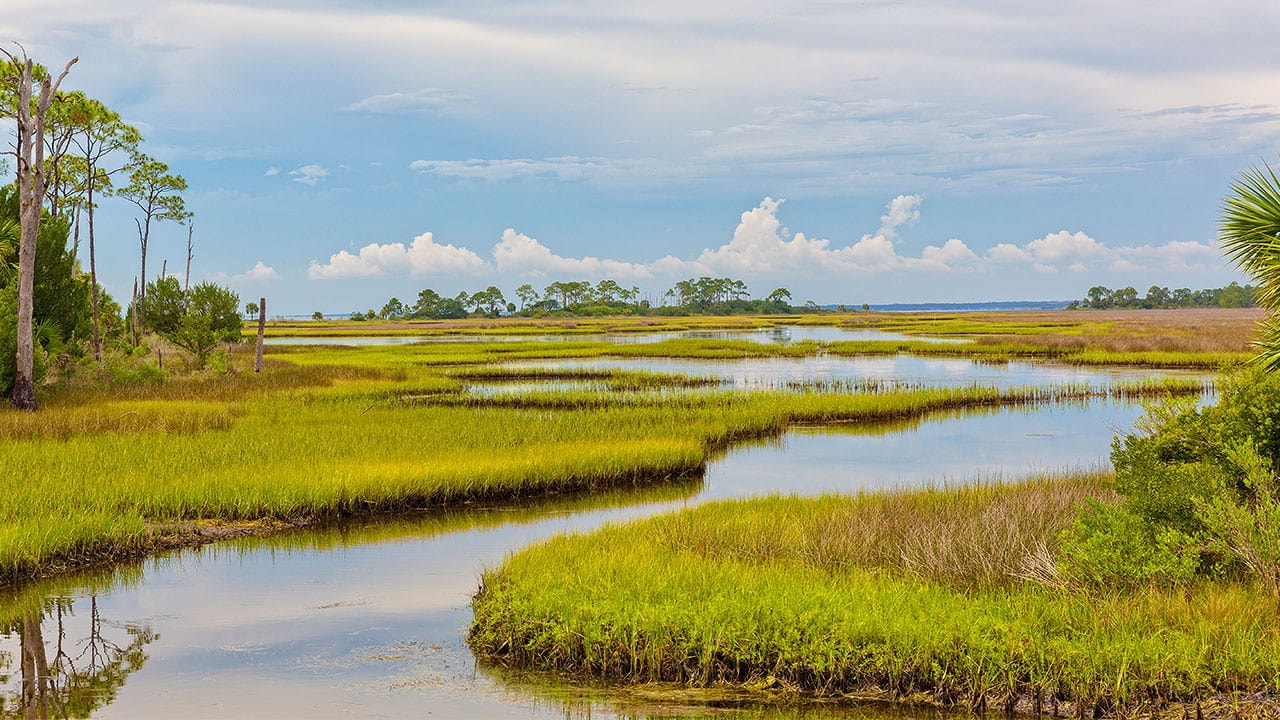
The Importance of the Florida Everglades cannot be overstated, yet Florida’s Everglades face significant challenges due to pollution, habitat loss, and water management issues. Key efforts are being made to restore the ecosystem and ensure its survival, highlighting the critical need to protect this vital natural resource.
Comprehensive Everglades Restoration Plan
The Comprehensive Everglades Restoration Plan (CERP) was authorized by Congress in 2000. It is a detailed initiative to restore the South Florida ecosystem while addressing water supply and flood protection needs.
CERP focuses on reviving natural water flow, which is critical for the health of the Everglades. Projects under CERP include constructing reservoirs and treatment areas to store and purify water. This helps reduce excessive nutrients that harm native flora and fauna. The plan also encompasses efforts to replenish underground aquifers, supporting the environment and the drinking water supply for millions of people.
Local and International Cooperation
Restoring the Everglades involves collaboration at multiple levels. Locally, efforts are spearheaded by the Florida Department of Environmental Protection and the South Florida Water Management District. These organizations work with federal agencies like the U.S. Environmental Protection Agency to monitor and reduce contaminants in the ecosystem.
International cooperation is also vital. Scientists and conservationists worldwide contribute to research and share restoration techniques. Initiatives include exchange programs and joint projects that enhance understanding and management practices.
This collective effort ensures the Everglades receive the attention and resources needed to combat ongoing environmental threats.
Education and Public Awareness
The Everglades are crucial for the environment and people’s well-being. Therefore, raising awareness and educating the public about this ecosystem is essential.
Community Engagement
Community engagement plays a vital role in promoting awareness about the Everglades. Local organizations and initiatives like the Everglades Literacy Program offer resources and events to engage residents.
They provide tools to protect the ecosystem and highlight the importance of the Florida Everglades to water supply and the economy. Public outreach campaigns often involve activities like eco-tours, volunteer opportunities, and community clean-up events. These hands-on experiences help individuals connect with the Everglades personally, deepening their understanding of the importance of the Florida Everglades and inspiring action to preserve this vital natural resource.
Workshops and seminars are also common. They offer education on preserving this unique landscape. By involving the community, long-term conservation goals can be achieved.
Role of Educational Institutions
Educational institutions are key in spreading knowledge about the Everglades. Many schools and universities integrate Everglades education into their curriculum. The Everglades National Park has partnered with teachers to provide curriculum-based, hands-on learning experiences.
Field trips to the park allow students to observe the ecosystem firsthand. This complements classroom learning and makes it more engaging. Teacher training programs offer specific resources and lesson plans. For instance, the Everglades Literacy program provides free materials and training to educators, aligning with state academic standards. This ensures that students receive a well-rounded understanding of the Everglades’ significance.
Watch this video to understand why it’s crucial to restore and protect the Everglades.
By: The Everglades Foundation
Preserving Paradise: Safeguarding the Vital Legacy of the Florida Everglades
The importance of the Florida Everglades extends far beyond its breathtaking landscapes and diverse wildlife. This remarkable ecosystem is a cornerstone of southern Florida’s environmental health, serving as a crucial buffer against climate change, a vital water source, and a hotspot for biodiversity. The Everglades’ historical, ecological, and economic significance underscores the urgent need for continued conservation efforts.
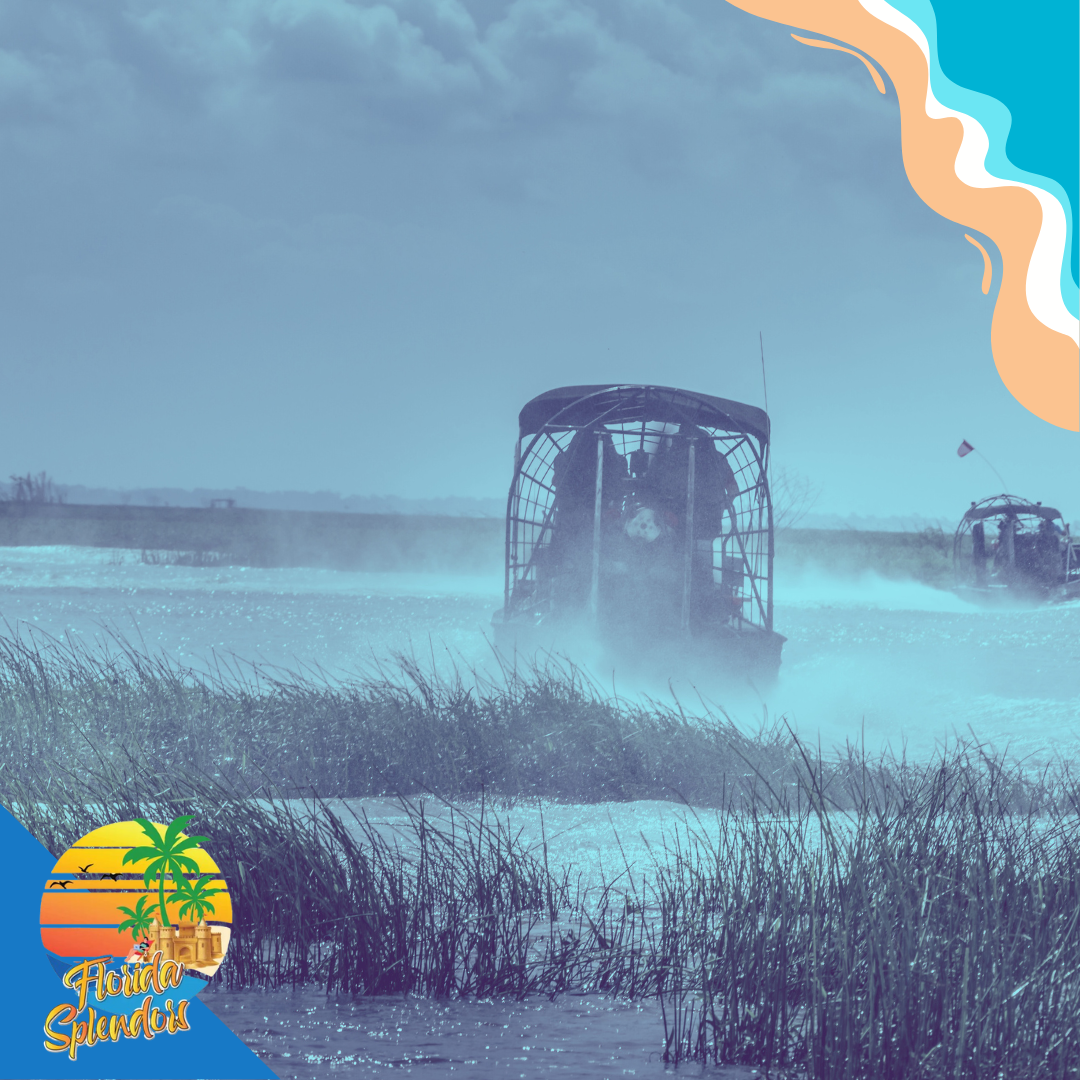
While the Everglades have diminished significantly over the past two centuries, ongoing restoration projects and public awareness initiatives offer hope for recovery and preservation. Understanding the importance of the Florida Everglades and recognizing our role in protecting this vital resource is essential for ensuring that future generations can continue to benefit from its myriad services.
As we face modern challenges like invasive species, pollution, and habitat loss, it’s clear that the health of the Everglades is intrinsically linked to our well-being. By embracing conservation efforts, supporting educational initiatives, and fostering a deeper connection with this unique environment, we can work together to safeguard the Everglades for years.
Frequently Asked Questions
How Do Human Activities Influence the Health and Sustainability of the Everglades?
Human activities like agriculture, urban development, and water management projects have significantly altered the Everglades. These activities disrupt natural water flows and introduce pollutants. Restoration efforts are underway to reverse some of these impacts and improve the ecosystem’s health.
What Species Depend on the Everglades for Survival, and How Are They Affected by Environmental Changes?
The Everglades has many species, including the American alligator, Florida panther, and several wading birds. Environmental changes such as habitat loss and pollution have led to a decline in some species. Conservation efforts focus on protecting these habitats and restoring populations.
How Does Pollution Impact the Everglades, and What Measures Are Being Taken to Address It?
Pollution from agricultural runoff introduces harmful nutrients into the Everglades, leading to algal blooms and habitat degradation.
Efforts to combat pollution include stricter regulations on agricultural practices and initiatives to reduce nutrient runoff. Conservation groups also work on removing invasive plants that thrive in polluted conditions.
Discover Florida’s Wonders with Us!
Follow us on social media for the latest in engaging content, product reviews, and a supportive community passionate about Florida. Join us today and connect with fellow enthusiasts who share your love for the Sunshine State!
Stay updated, inspired, and connected. See you there!

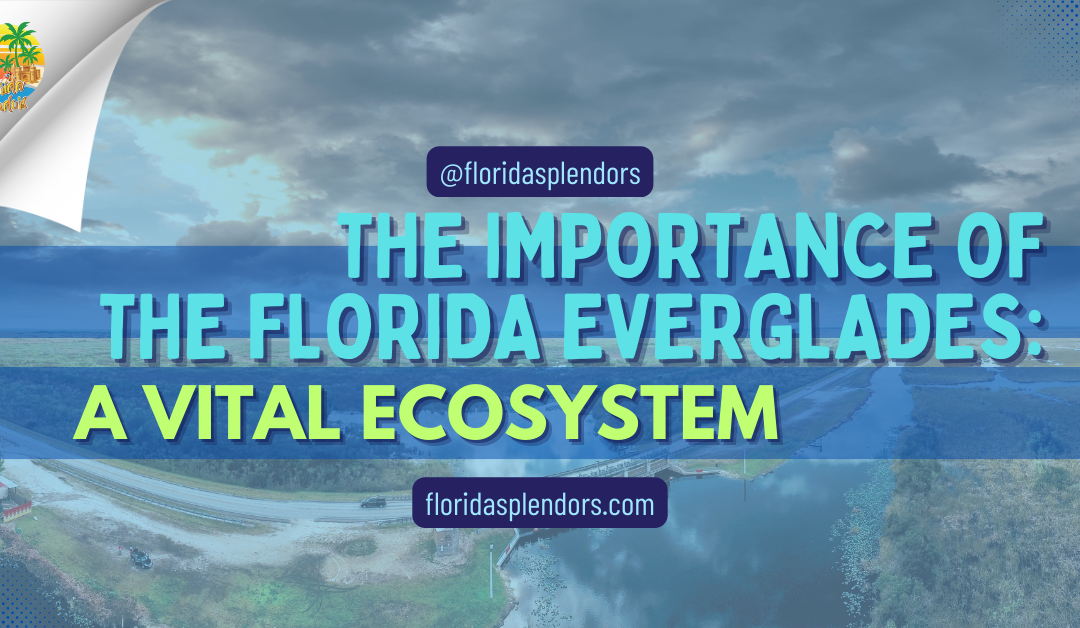
Your perspective is both unique and insightful!